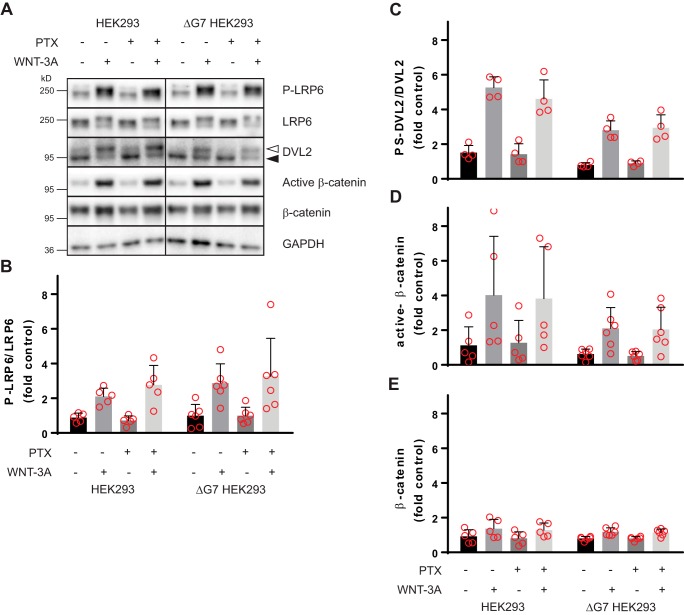Figure 2.
WNT-3A activates the WNT/β-catenin pathway in the absence of functional heterotrimeric G protein signaling. Parental HEK293 or ΔG7 HEK293 cells were stimulated with purified, recombinant WNT-3A (300 ng/ml, 2 h) in the absence and presence of PTX (100 ng/ml, overnight). Autocrine WNT signaling was reduced in all experiments by porcupine inhibition with C59 (10 nm, overnight). Pathway activation was visualized by detection of LRP6 phosphorylation (P-LRP6 over total LRP6), phosphorylated and shifted DVL2 (unshifted (filled triangle) and shifted (open triangle)), active β-catenin, and total β-catenin stabilization. GAPDH served as a visual loading control. A, a representative immunoblotting experiment from 4–6 independent experiments is shown. Probing with different antibodies was done after stripping on the same cell lysates. B–E, immunoblotting experiments were quantified by densitometry and normalized to a control sample (see “Experimental procedures”), and data were summarized in bar graphs. Error bars, S.D. Results were analyzed with one-way ANOVA and Tukey's multiple-comparison post hoc test. All WNT-3A–induced increases are statistically significant compared with unstimulated conditions (p < 0.05).

